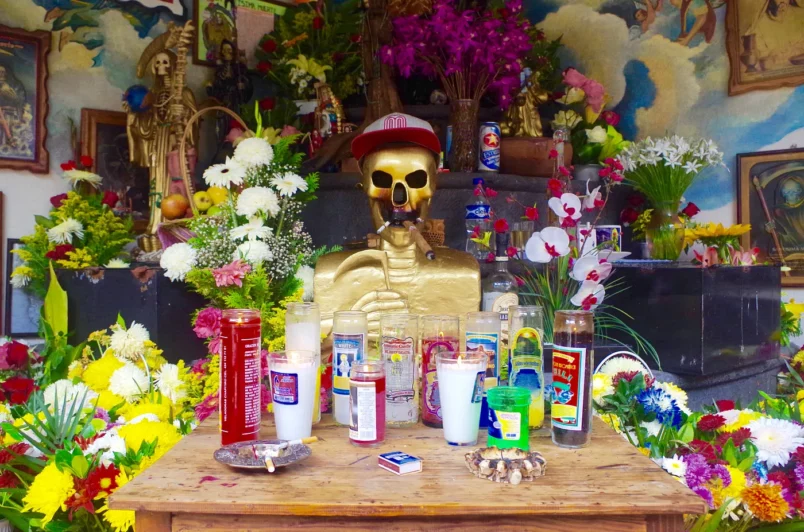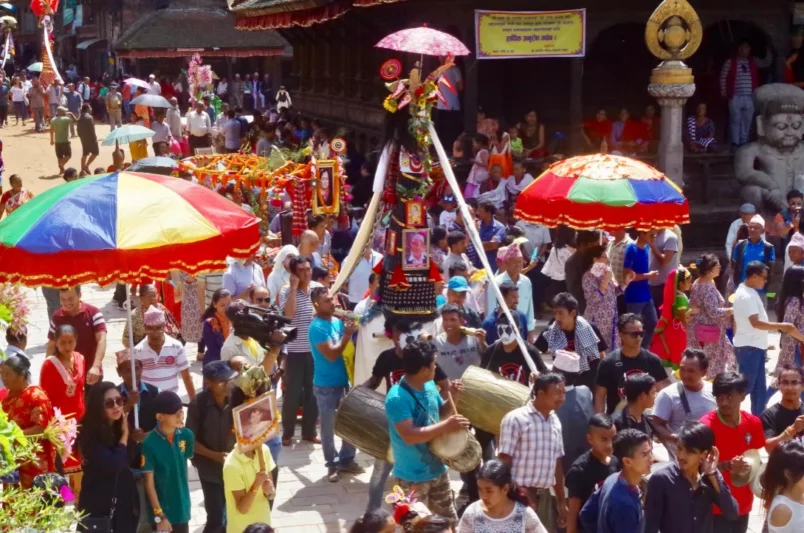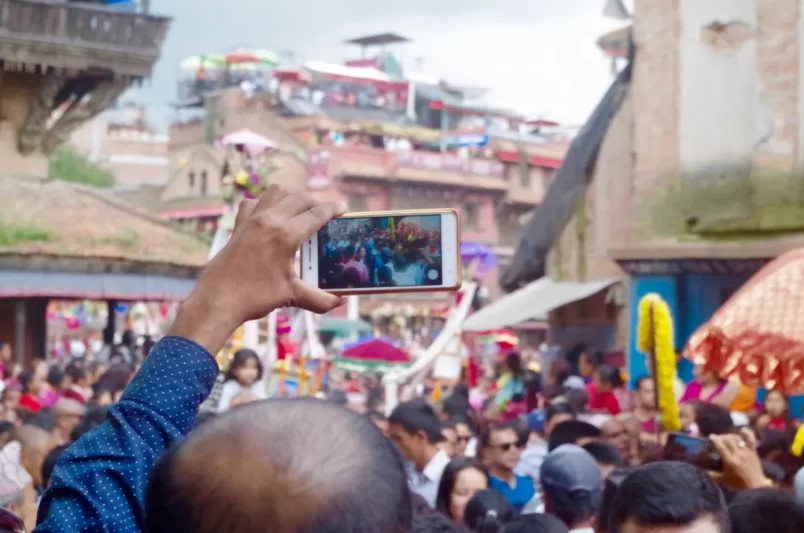
‘No tenemos miedo’ — we are not afraid of death

Everybody dies, and in the book I’m writing, my father-in-law Chris dies at the very beginning. By the time we found him, he’d been dead for eight days.
I didn’t talk to anyone. Why would I? He wasn’t my dad. I wasn’t the one who found him, eight days after he died.
There is a grief hierarchy, and we judge whether a person’s level of grief is acceptable according to it. Distraught wife? Absolutely. Sobbing children? Naturally. Friends, sure. Colleagues, ok. Neighbours…I guess, if they were close. But the daughter-in-law-to-be doesn’t even feature.
As people asked me almost on an hourly basis how my fiancé Dion was, I figured it was best if I kept quiet about my own feelings of drowning, the constant swell of panic in my tummy, the absolute certainty that someone else I knew could die unexpectedly. My job wasn’t to cry and shout about being bereaved, I thought; my job, surely, was to make sure the next person I knew who dropped dead wouldn’t wait eight days to be found.
Luckily, the newspaper where I worked seemed to sense that I had more important things to be doing and gave me a work-at-home contract. So between writing and pitching and interviewing, I checked on my friends. How long since they last posted on Facebook? Have they read my message yet? Did they turn up to that party they said they were going to?
In my experience, misery does not love company. In fact, my misery didn’t even identify itself, instead masquerading as pure and genius logic, best worked on with no one else around to poke holes in it: anyone outside this room might be dead; ergo: I’d better check.
On everyone I know.
I have a friend in mortuary school in the US. Yesterday she sent me a screenshot of her lecture notes with the message, “Here’s what American Mortuary students are taught about Brits…” I was ready to read about stiff upper lips or bad teeth (I realise that’s not relevant to grief, but they often seem to be able to work that into every conversation), but it said Brits: “… internalise their grief and have difficulty seeking emotional support” and that a major concern is to avoid being a burden.
Hmm. Well, that’s annoyingly dead on. Perhaps it’s particularly British misery that doesn’t love company?
I eventually realised two things. One: there is no right way to grieve, but there’s definitely a wrong way, and sitting at your computer stalking everyone you know to check they’re alive is definitely the wrong way. Two: I had a problem. That became clear when I tried to go outside. It took me hours to work up the courage to leave the house, and when I got hold of a sandwich at a Waitrose 900 ft from my front door, a nice lady approached me to offer me a discount on Jaffa Cakes and I panicked, threw the sandwich and ran home.
I feel bad about this. I hope she just thought I hated Jaffa Cakes.
Back at my kitchen table, where the air was thin enough to breathe without effort, I thought about Mexico, where I lived for two years after university. I’d only been there six weeks before the place exploded into colour. Orange, pink, yellow, green and purple paper streamers hung from tables and across courtyards, marigolds covered entire surfaces of altars lit with candles — and there were glittery sugar skulls everywhere. They literally sugar-coated death.

My first year there I went to dinner with my Mexican boyfriend’s family in Tepoztlán. They had an altar in the corner decorated with pictures of the deceased and dotted with refreshments — water, tequila, bread, cookies, a little mole rojo.
“Do you eat the food after the festival’s finished?” I asked one of the attendees.
He wrinkled his nose, “Well, you could, but there’s no nutritional value in it anymore once the spirits have eaten it.”
“So, there’ll be no calories in those cookies tomorrow?” I asked, smiling.
“Yes, exactly.” He wasn’t kidding.
We ate, we drank, we laughed. And people told me — everyone I asked, in fact — “No tenemos miedo”. We are not afraid. We are not afraid of death.
I opened my laptop, and Googled, “death festivals around the world”.

Psychiatrist Irvin D. Yalom said:
Adults who are racked with death anxiety are not odd birds who have contracted some exotic disease, but men and women whose family and culture have failed to knit the proper protective clothing for them to withstand the icy chill of mortality.
Sounds like Yalom might blame my sandwich-throwing on my upbringing in a medical family (medics are taught death is failure, a “negative outcome” — which is a hell of a maxim for a game rigged so universally against them) — and in Britain, where even as the topic is becoming less taboo, the Death Café movement made the news. Let me repeat that: people openly discussing death makes headlines in this country.
Or is it me? Why don’t I have the protective clothing to ward off the icy chill of mortality? And where can I get it? Do they make it in my size?
After two hours, I looked down to see I’d made a list of death festivals. I clutched the list and held it up. These are places, I thought, where people respond to death by throwing a party, not a sandwich.
I’d better go and see how they managed that.
“Hey!” Dion said, smiling, not hiding his surprise that I was dressed at the table making notes like a person, instead of distressed on the sofa like an upturned beetle.
“I’m going to go to seven death festivals and write a book about it,” I said by way of a hello. I’d barely left the house in weeks, I’d failed to buy a sandwich in a supermarket steps from my front door, and suddenly I was travelling to seven countries.
“Wow. Ok. Why seven?”
I looked at my hands.
“One for every day we didn’t find him.”

I did eventually talk to someone, of course. I needed to. We all do. Grief isn’t something to be handled alone, even if you have the proper protective clothing to protect against mortality’s icy chill.
That November, I went to Mexico’s Day of the Dead, and lit a candle for my father-in-law. Last August I went to Nepal’s Gai Jatra, and danced in a crowd of people who had also lost someone that year. Three months ago I went to Sicily’s Festa dei Morti, and ate sugar with strangers who told me over and over that death is a part of life. I’m about to travel to Thailand to celebrate Qingming with my Chinese stepmother, where we will burn paper money and houses and cars as gifts for our dead. Later this year I’ll party with spirits in Japan, dress corpses in Indonesia and pour rum on the dead in Madagascar.

The joy of doing this in 2019 is that I have a crowd of supporters virtually accompanying me; my publisher, Unbound, has put the book on sale as I’m writing it, meaning people who buy the book as I go will get updates from the death festivals. Once it reaches a target of preorders the book will be issued a publication date (we’re shooting for 2020), and the people who buy it as it’s being written get their name printed in the back as a thank you.
So please do come along.
Hope loves company.
Find out more about Erica’s journey, and her book, on her publisher’s website. You can also find Erica on Twitter.